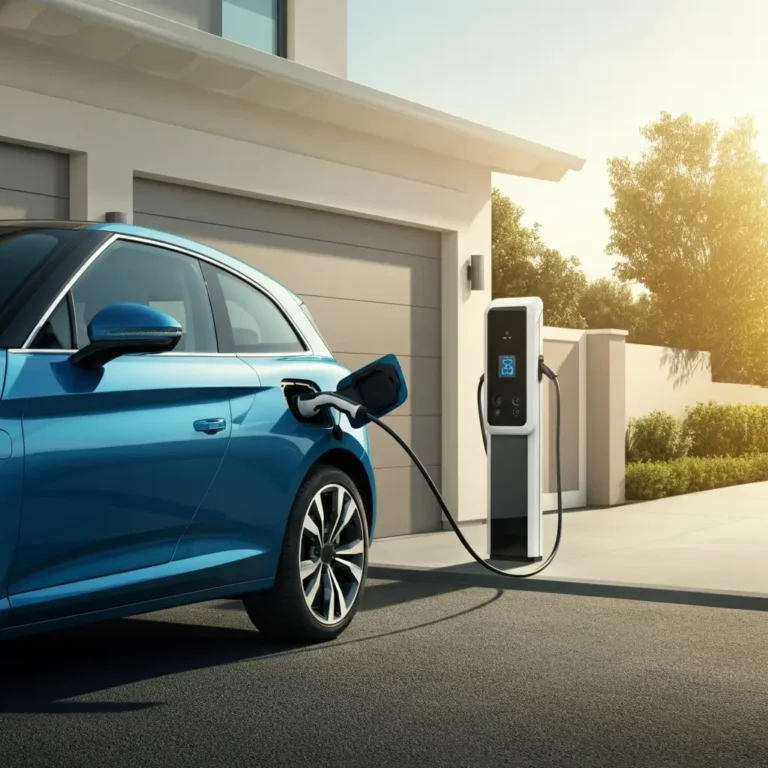How Long Does It Take To Replace An Ignition Coil
Replacing an ignition coil might sound intimidating, but with the right information, it’s a task that can be understood and tackled confidently. Whether you’re a car owner aiming to understand the process or someone doing research before heading to a mechanic, this guide will walk you through everything you should know about ignition coil replacement, including the time it takes, the costs involved, and when it’s needed.
Table of Contents
What Is an Ignition Coil, and Why Is It Important?
This is a key component in your car’s ignition system. It converts the low voltage from your vehicle’s battery into the high voltage required to create a spark in the spark plugs, which ignites the air-fuel mixture in the engine cylinders. Without a functioning ignition coil, your car won’t start or run efficiently, and you might experience poor fuel mileage or even engine misfires.
Signs Your Ignition Coil Needs Replacing
It doesn’t last forever, and there are clear signs that tell you when it’s time for a replacement. Here are the most common symptoms:
- Engine Misfires: If your engine stumbles, skips, or sputters, especially during acceleration, it could point to a faulty ignition coil.
- Difficulty Starting: A dead ignition coil means no spark, making it hard to start your car.
- Poor Fuel Efficiency: A bad coil can cause incomplete combustion, wasting fuel.
- Check Engine Light: A malfunctioning coil can trigger the check engine light, which your mechanic can diagnose.
- Rough Idle: The engine may feel shaky or rough when your car is idling.
Recognizing these symptoms early on gives you time to address the issue before it escalates.
When to Replace an Ignition Coil
On average, ignition coils last between 60,000 to 80,000 miles, though this can vary depending on your vehicle’s make, model, and how you drive. You should consider replacing the coil if:
- You notice any of the signs listed above.
- Your vehicle has crossed the recommended mileage for ignition coil replacement in your owner’s manual.
- You’ve recently replaced spark plugs since old coils may not perform well with fresh plugs.
Preventive maintenance can save you from unexpected breakdowns on the road.
How Long Does It Take to Replace an Ignition Coil?
The time it takes to replace an ignition coil depends on your car’s design and how accessible the coil is. Typically, the replacement takes between 30 minutes and 2 hours.
For cars with easily accessible ignition coils located near the engine cover, it may take as little as 30 minutes. However, for cars with multiple coils or those buried under other engine components, the process can stretch to 2 hours or more.
A seasoned mechanic will be quicker, while first-timers or DIYers might need to set aside extra time to complete the task.
Step-by-Step Process of Ignition Coil Replacement
Here’s a simplified breakdown of the replacement process:
- Turn Off the Engine and Disconnect the Battery: Ensure the engine is cool for safety, and disconnect the negative battery terminal.
- Locate the Ignition Coil: Consult your car’s manual to pinpoint it’s location.
- Remove the Electrical Connector: Carefully unplug the wiring connector attached to the coil.
- Unbolt the Coil: Use a ratchet to remove the bolts securing the coil.
- Take Out the Old Coil: Pull out the coil gently, being cautious not to damage any surrounding parts.
- Install the New Coil: Position the new coil in place, tighten the bolts securely, and reconnect the wiring.
- Reconnect the Battery and Test: Reattach the battery and start the engine to test the new coil’s performance.
This process applies to most vehicles, but complexities differ depending on the car. Always refer to the owner’s manual or talk to a professional if you’re unsure.
Ignition Coil Replacement Cost
The cost of replacing it typically falls between $50 and $300, excluding labor. Labor costs at a repair shop can add an extra $50 to $150, depending on your car model and local rates.
If you do the replacement yourself, you’ll only need to cover the cost of the part and any tools you may not already have. This makes DIY an economical option if you’re comfortable with basic car repairs.
DIY or Professional Help? Choosing the Right Option
Determining whether to do it yourself or hire a professional depends on your comfort level, experience, and car model.
- DIY Pros: Saves money, sense of accomplishment, flexibility.
- DIY Cons: Risky if you’re not experienced; mistakes can lead to costly repairs.
- Professional Help Pros: Quicker, guarantees quality, suitable for complex vehicles.
- Professional Help Cons: Expensive and may require scheduling an appointment.
If you’re a beginner, it’s wise to attempt simpler vehicles first or seek professional help.
Tools You’ll Need for Ignition Coil Replacement
Before you start, gather these essential tools:
- Wrenches or a socket set
- Screwdrivers (Phillips and flathead)
- Torque wrench (optional for precise tightening)
- Dielectric grease (to protect electrical connections)
Having the right tools on hand prevents unnecessary delays during the process.
Tips to Ensure a Smooth Replacement Process
- Work in a Well-Lit Area: Good visibility reduces errors.
- Consult Your Owner’s Manual: Always check specific instructions for your vehicle.
- Label Wires: If there are multiple coils, labeling wires ensures correct reinstallation.
- Inspect Surrounding Parts: While replacing the coil, check spark plugs and connectors for wear.
Attention to detail can make a significant difference in the success of the repair.
How to Extend the Life of Your Ignition Coil
While it inevitably wear out over time, you can maximize their lifespan with proper care:
- Regular Maintenance: Replace spark plugs on schedule, as worn plugs strain the coils.
- Avoid Heavy Moisture Exposure: Water can damage its connections.
- Don’t Ignore Engine Symptoms: Address misfires and check engine lights promptly to prevent further damage.
Taking these steps ensures your vehicle runs smoothly for longer.
Frequently Asked Questions (FAQs)
How regularly must the ignition coils be replaced?
As a rule of thumb, check your manual, as most ignition coils are good for 60,000 to 80,000 miles.
Is it Okay to Drive With a Broken Ignition Coil?
If you are performing misfires as a result of poor coil efficiency, you may be harming your engine, fuel economy, and many other parts. Replacing the coil promptly improves long-term cost efficiency due to lower collateral damage.
What happens when a Worn Ignition Coil Isn’t Replaced?
Leaving a worn ignition coil unattended will greatly increase a vehicle’s chances of misfires, rough crank starts, and collateral damage to the catalytic converter.
Do I have to replace all ignition coils at once?
Not particularly, but if one is completely dead, the others are likely to follow up in a short time. Doing this increases convenience in the long run.
Can I replace an ignition coil myself?
Yes, in the case that basic steps and tools are common to you, a majority of ignition coil changes are simple enough to be tackled by the owner himself.
This guide simplifies ignition coil replacement, covering time, cost, and steps to help you decide between DIY or professional help, ensuring your car runs smoothly.







